Commerce has always had its ups and downs, but key economic factors have been making it extra challenging lately. Even as inflation eases, many consumers are still unsure about the economy. They wonder how conditions like labor shortages and a decrease in energy support will impact their pocketbooks.
Consumer confidence is somewhat unstable in the U.S., Europe, and elsewhere, with concerns about politics, personal finances, and more. Retail sales recently dropped .8%, causing retailers to worry they weren’t going to see the comeback they wanted.
While consumers are spending cautiously, commerce brands face discount demands and global economic factors that are out of their control. Now is the time for commerce brands to focus their marketing efforts to counter those challenges. It’s especially important to provide better customer experiences.
Here are five ways you can level up your marketing — and customer experiences — in 2024.
- 1. Embrace first-party data
- 2. Personalise your marketing
- 3. Create seamless omnichannel experiences
- 4. Use mobile notifications
- 5. Go all in social selling
1. Embrace first-party data
Several browsers have already blocked third-party cookies, but Google plans to phase them out this year in Chrome. The move is in response to user concerns about how data is collected and used — and how much effort it takes to opt out. The demise of third-party cookies is forcing marketers to be more focused and creative in reaching customers.
If you were using third-party data for your marketing efforts, the most important step you can take now is to focus on first-party customer data. This is data customers provide to you on your website and other platforms. Fortunately, commerce brands have a lot of ways to collect first-party data from customers, and there is a lot of data that is relevant to your marketing. This includes:
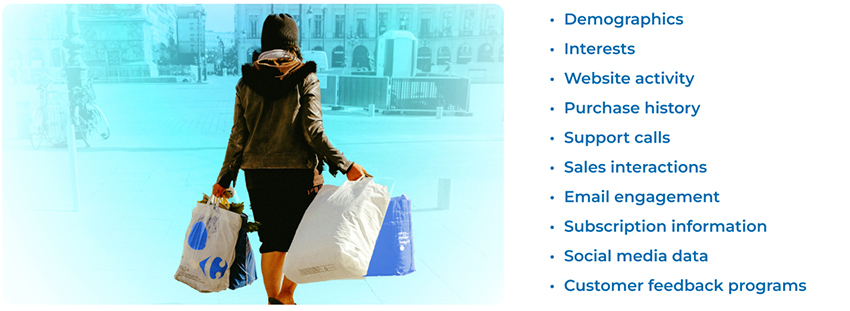
First-party customer data contributes directly to the customer experience when you use it for personalization, predictive modeling, improved customer service, and customer targeting and segmentation. You can also use the data to improve customer retention by creating better experiences through seamless cross-channel marketing and more focused loyalty programs.
Customers consent to the use of their data when they provide it directly, allowing you to comply with many new data privacy laws. Europe has been a leader in establishing consumer privacy standards. The European Union’s General Data Protection Regulation (GDPR) requires organizations to protect the user data of its residents and citizens. It’s considered one of the toughest privacy and security laws in the world. Countries like Canada, Egypt, Nigeria, South Africa, and some U.S. states like California have also enacted comprehensive privacy laws.
Consumers worldwide benefit from these laws because it’s easier for marketers to adopt the strictest compliance standards than try to adopt a variety of settings.
To maintain trust with your customers, it’s important to be transparent with how you plan to use their data and how they can control or manage their information. Of American adults, 81% have concerns about their data privacy, and 67% say they don’t know what companies do with their data.
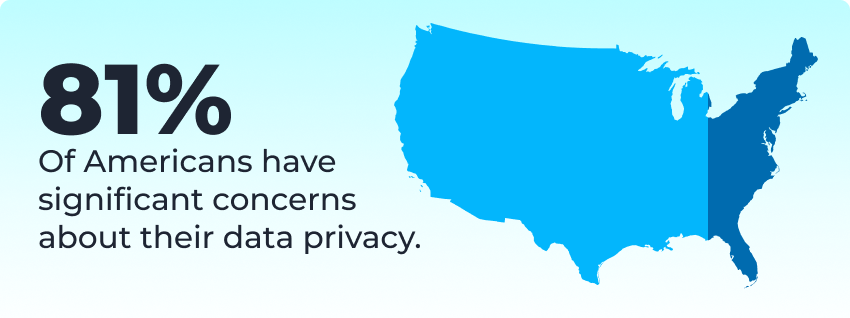
Companies already know how important trust is, with 91% saying they should do more to inform customers about how artificial intelligence (AI) is engaging with their data. Additionally, 94% say customers will only purchase from them if they know their data is protected.
Even though organizations understand the importance of data privacy, they don’t always know the best way to manage it. Here’s some information to help you collect data you need while prioritizing customer privacy.
How to collect customer information
There are several places where you can collect first-party data about prospects and customers. These include your website, email, text messages, mobile apps, social media platforms, and in-person and ecommerce points of purchase, and email and text messages.
Many of these collection methods cost less than other data collection efforts because they coincide with marketing you’re already doing. And in each of these areas, you have a variety of opportunities to interact with customers and learn more about them.
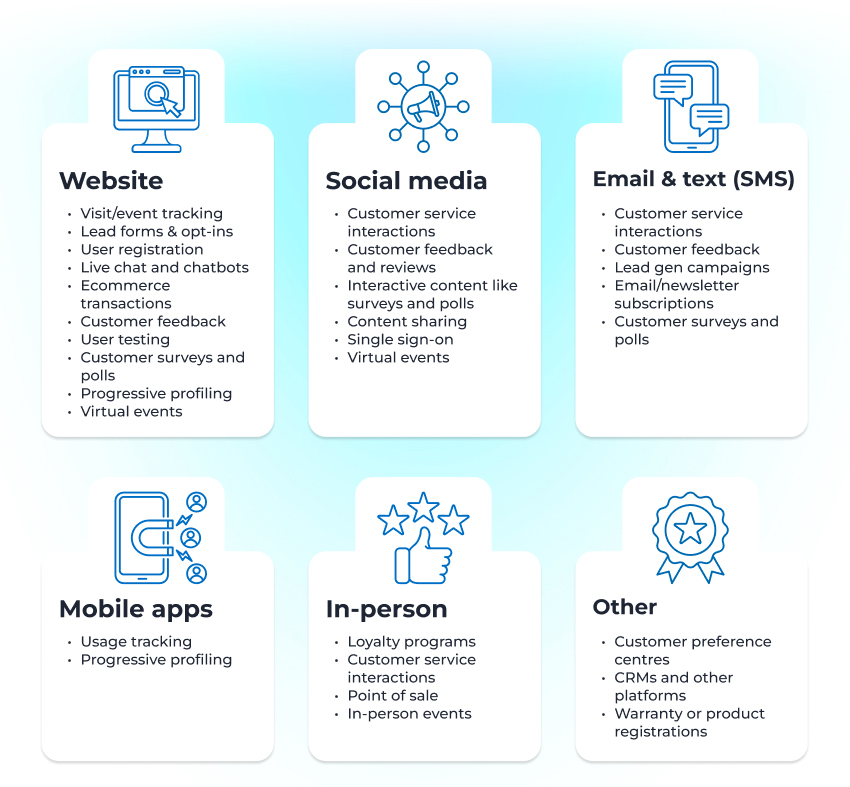
To collect and access all this information, you can use a customer data platform. For more integration, To collect and access all this information, you can use a customer data platform. For more integration, management, and automation features, consider a more comprehensive unified customer engagement platform.
The value of a unified customer profile
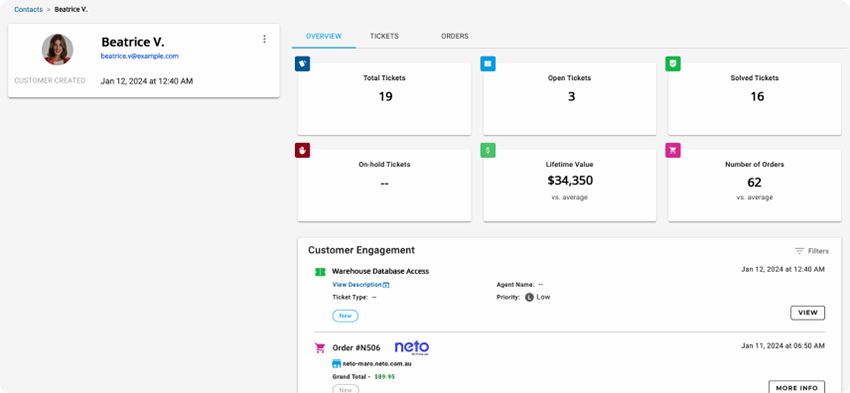
A unified customer profile (UCP) is basically the entire story of a customer’s interactions with your business, including their relevant behaviors, purchases, demographics, and traits. The record should automatically integrate new information from all sources and provide an easy-to-read snapshot view to those in your company.
These sources can include any channels, touchpoints, or databases with customer information, including your sales, support, and marketing platforms. You need the right service software to consolidate and sync all this data in real time.
The value of maintaining UCPs is that they let marketers, sales representatives, and customer service agents easily access and reference consolidated customer histories and information. That access is essential to personalizing customer engagements, especially in customer service conversations. That’s because customer service is the biggest driver of customer loyalty, with 74% of consumers saying it’s important.

With a UCP at their fingertips, customer service representatives can quickly and accurately see a customer’s order status, answer questions, address pain points, or make product recommendations. A UCP provides a better experience for customers as well as representatives. The agents don’t need to conduct a lot of research, and customers don’t have to repeat themselves, receive duplicate information, or waste time searching for answers.
2. Personalize your marketing
Effective marketing is as much about making good use of the data you have as it is about collecting new data. Personalization is one way to connect with and delight your customers.
First-person data helps you hyper-personalize emails, content, and other communications. This goes beyond using the customer’s name. It includes showing them custom content and specific products based on real-time data.
Consumers prefer personalized ads and relevant product recommendations, so predictive AI is a powerful tool for making product recommendations. With customer information, AI can predict what a customer may want next based on a combination of their personal data and buying history, as well as the actions of other customers who followed a similar buying journey.

This potential also holds true for upsell and cross-sell opportunities. UCP data can inform customer This potential also holds true for upsell and cross-sell opportunities. UCP data can inform customer representatives as well as AI-powered marketing tools. These automated solutions are able to recommend accessories, complementary products, upgrades, subscriptions, and more to boost your average order value.
AI for commerce
There are opportunities to use artificial intelligence (AI) in all areas of business. This includes pricing There are opportunities to use artificial intelligence (AI) in all areas of business. This includes pricing optimization, demand prediction, logistics and inventory management, and the identification of fraud and fake reviews. It’s also a valuable tool for directly improving the customer experience. Here are some ways to use AI with your customers:
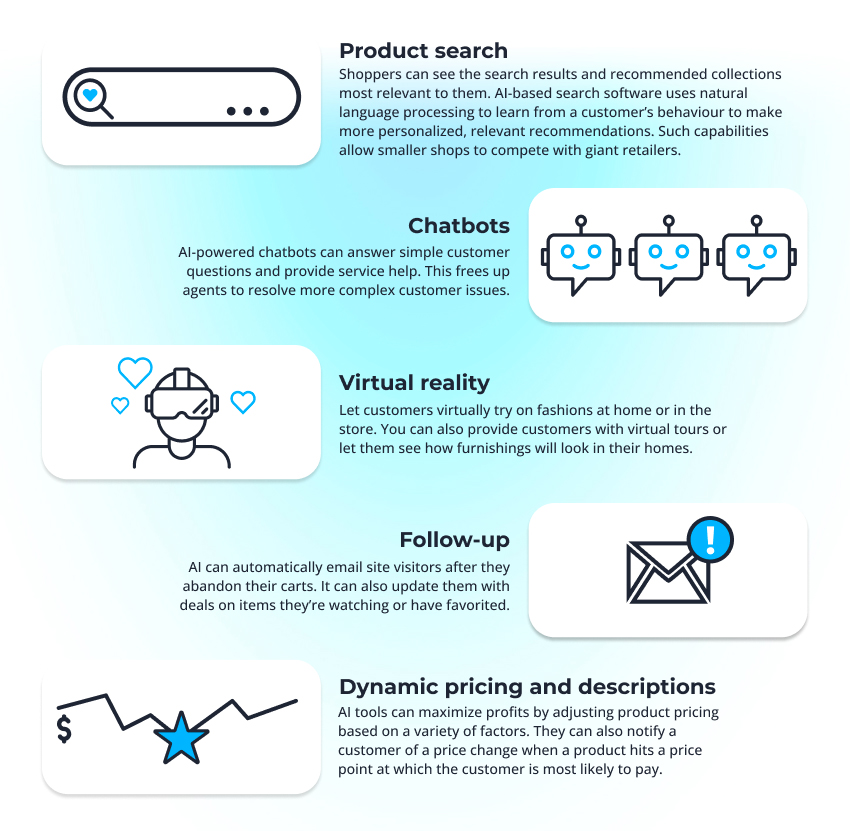
3. Create seamless omnichannel experiences
When customers move between channels, they search for information, deals, and options. They may also be checking to see if your brand is right for their needs.
Consistent and recognizable branding is essential for ensuring your customers have a smooth omnichannel experience. A seamless journey also requires data integration and centralization of customer interactions, including their engagements with your representatives.
For example, a customer may see an ad for your rugs on Instagram. They then click through and look at products on your site. They purchase one of your rugs online and choose in-store pickup. At the same time, they sign up for your loyalty program. You email them a coupon that they take to the rug pickup with them, where they use the QR code to get a deal on a matching lamp. It was a smooth and pleasant experience because the store simply had to scan the purchase and discount codes.
Every channel is important because a customer’s experience within any of them may determine if they become or remain a customer. Also, more opportunities to engage with your brand and products can strengthen the customer relationship.

That’s one reason retailers are planning to open more brick-and-mortar stores. The Economist Intelligence Unit predicts that brick-and-mortar businesses will make up over 85% of retail sales in 2024.
Another reason for the investment in physical storefronts is that consumers are making a return to real-work shopping. The strongest retail economies in Europe saw offline retail grow faster than online retail in 2022 and 2023. Experts predict brick-and-mortar store sales to hit €2.1 trillion by 2028 in those countries.
Marketing automation plays an important part in unifying your offline and digital channels for a better customer experience. Using a marketing automation solution across channels allows you to systematically personalize communications, engage customers, and help move them along in their buying journey.
Building a brand community
Beyond creating an easily identifiable and likable brand, how do some companies manage to build a thriving, loyal brand community?
The brands that you think of with the most devoted customers and followings share some common characteristics. These brands have:
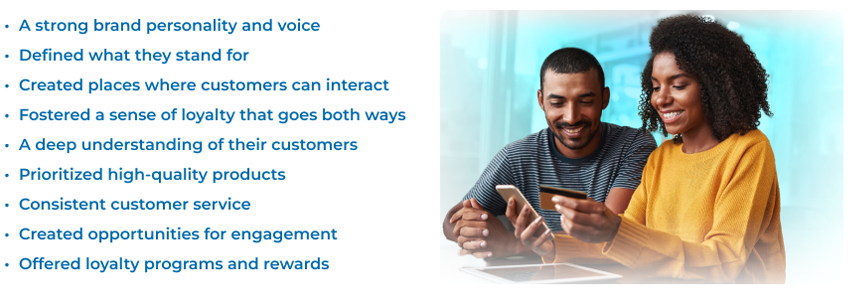
If you want to build your brand community, commit to learning more about your audience. You can use content, forums, hashtags, and partnerships to unite and appeal to community members. Continually analyze your efforts and ask your community members about their experiences.
4. Use mobile notifications
Personalized SMS notifications reach your customers in real time and see open rates upwards of 90%. Retailers are the biggest users of SMS marketing, but some are still missing out.

Setting up automated mobile notifications saves you time, keeps your brand top of mind, and gives your customers the updates and recommendations they want.
You can send out promotions, surveys, loyalty program information, notifications about restocked merchandise, and more. Many customers appreciate text messages regarding order receipts, deliveries, or pickups. Ensure you comply with all relevant laws and regulations to avoid fines and penalties.
With marketing automation, you can set up SMS sequences the same way you set up email workflows, so no one has to worry about manual sends.
Communicating by email and mobile
More retailers are adopting SMS messaging, but that doesn’t mean email is going away. Both kinds of messaging have their place. When deciding on which channel to use, consider the customer’s preference, the type of content, and the length of messages, as SMS is better for brief notifications.
Here are a few tips to remember when email marketing:
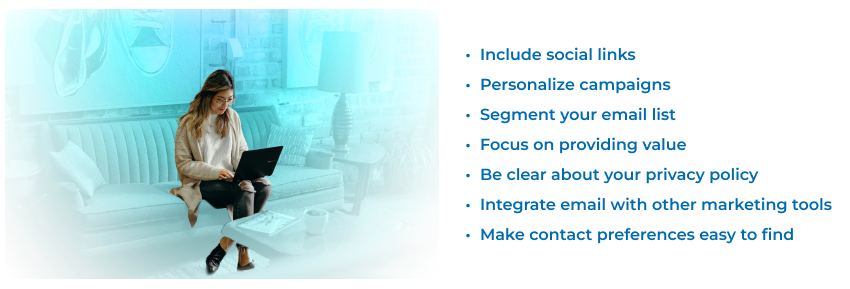
5. Go all in on social selling
Integrate social campaigns with your other marketing efforts to get better customer insights and create more uniform experiences. You can do this through a marketing automation platform. You’ll be able to see when a customer has reached out, whether through social channels, email, or some other way.
Beyond engaging and marketing via social, selling is gaining ground. It’s a natural evolution since shoppers can research, price, save, share, and buy products in one place. Younger generations are accustomed to social media buying and shopping. They discover many products and brands there, either through ads or posted content.

Smartphone commerce–or direct selling on social media platforms like Instagram and TikTok–is gaining in popularity and becoming an important consideration for commerce marketers. Some apps are adding checkout and shipping features to become comprehensive transaction solutions.
Video for social
Video and live streaming have become integral to the omnichannel experience. Video is playing a growing role in all aspects of social media marketing and selling. Live commerce–or live-stream shopping–is a community-building channel for retailers to connect and engage with customers, and experts expect it to gain popularity over the next few years.
Here are some ways to incorporate video into your social media efforts and to support your sales:
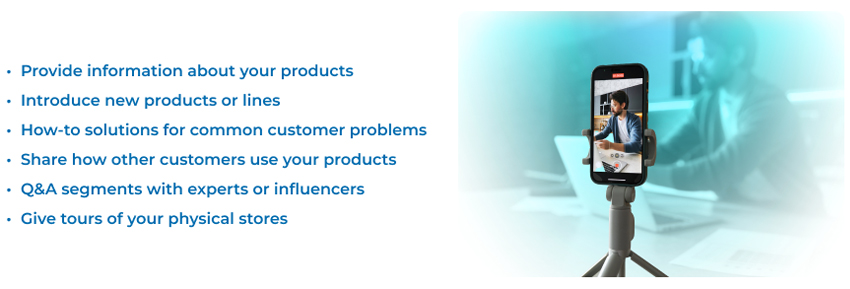
Modernize your marketing with unified data
For retailers to be successful in the new landscape of commerce marketing, they’ll need to focus more on data integration, personalization, automation, and customer experience.
Choosing the right technology is key. That’s why Maropost offers a product suite of smart, proven commerce solutions for retailers worldwide. These include Maropost Marketing Cloud, Service Cloud, and Merchandising Cloud.
Ready to give your marketing a boost?
Need to chat about your mobile marketing strategy?
More than 10,000 marketers use Maropost to engage with their prospects and customers through emails, SMS, social media and more. We’re here to help you grow your business!
Chat Now

